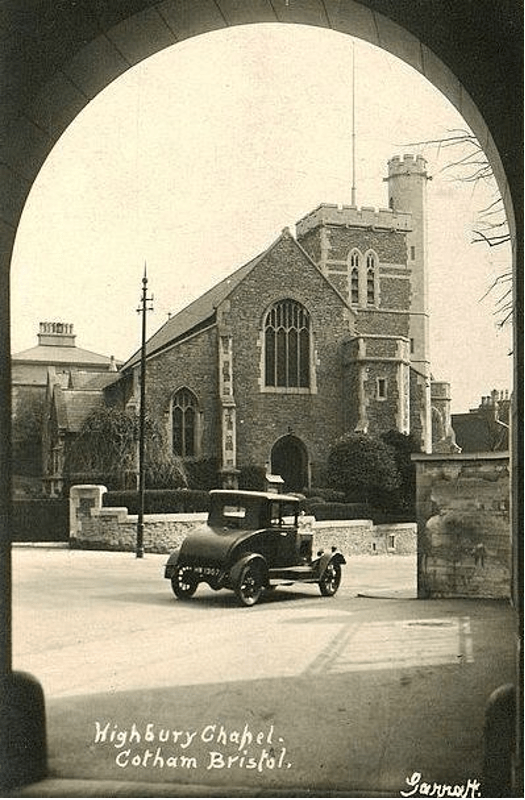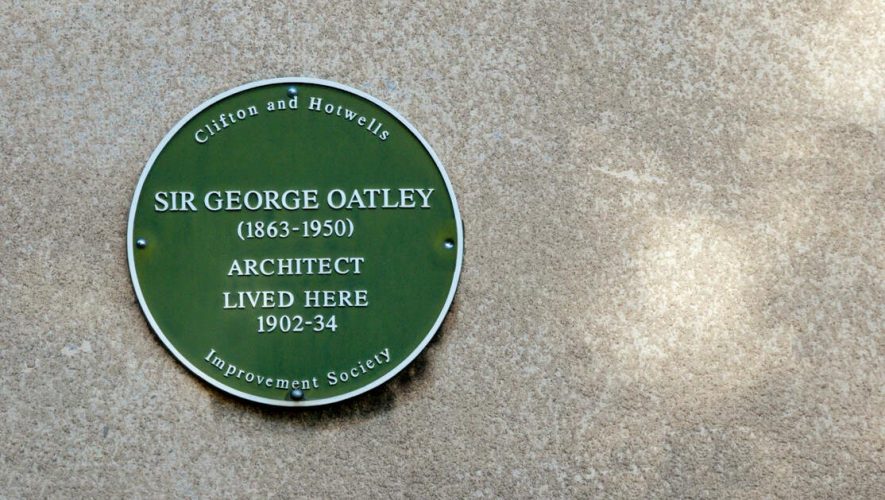Sir George Oatley is regarded by many as the most significant Bristol Architect of the 20th Century.

He was not only a brilliant Architect, but a Saint, a man who Old Gnu admires greatly. His life unfortunately is not recorded in the Bible. But are not all his acts of kindness, his great works and the considerable hardships he endured both in early and later life recorded in the chronicles of Sarah Whittingham, with the title, “Sir George Oatley – Architect of Bristol”? This masterly written account [400+ pages] retailed at £49.75 when it was first published in 2011, but some extortionist will try and charge more. It was ever thus.

The first thing you have to know about Mr. George Oatley is found in a letter he wrote in 1933:
“….I suffer increasingly from inferiority complex – not in one, but in every department of my life – Religious, Social, Public and business.. It gets more acute and has to be fought off by Faith.” He was brought up in poverty, with no social standing and said he was despised for his non-conformity – [he was a member of the Congregational Church, and not the good old Church of England].

This is not surprising when one considers his upbringing.
Mr. George Oatley’s Parents both died, within 2 weeks of each other, when he was 9 years old. He and his 4 younger siblings were taken in by an aunt who lived at Brading on the Isle of Wight. George was forever grateful for her great kindness, and even more so in later in life when he discovered the other alternative would have been to be sent to Muller’s Orphanage Home in Bristol. Aunt Ann was poor, very religious, but heroic. She took in the Oatley children with the help of Miss Harriett Whiddon. She was, like George’s parents, a devout Congregationalist. On one occasion she mistook the sounding of the foghorn in the Channel as the The Last Trump heralding The Rapture. On another the experimental firing of a torpedo, with its accompanying flash of light and noise, as the arrival of The Last Day, The Day of Judgement. The downside of living with this kindly Aunt Ann was that she instilled in the George the fact that he was wicked and sentenced for hell – a frequent ploy used by a significant number of Christians worldwide to ‘convert’ their children. Why not tell them about the love of God who has given us all things richly to enjoy, and the gratitude we owe this good God? Old Gnu has witnessed the irreparable damage this has done in many lives.

This was not helped by a year of boarding school run by the Exclusive Brethren in Witney. Yet, George grew up to be broad minded and inclusive and was happy with Christians of any denomination though he kept to his upbringing as a Congregationalist. He had a strong and unwavering personal faith.
At the age of 13 he was expecting to be apprenticed to a wine merchant and then to an ironmonger. He wrote at the time, “I should like that pretty well”. But a meeting with a phrenologist who felt the bumps on his head, said he should do drawing. A kind architect at Ryde, Thomas Dashwood by name, offered to take on the 13-year-old George. And, as they say, ‘the rest is history’.
At the age of 16 he was back in the Bristol where he was born. He vowed as a young man to give away £900 of every £1000 he earned; no doubt mindful of the poverty in which he had been brought up. He hated money and observed that it destroyed the souls of some of the richest in the land for whom he had worked.
In Bristol he got to know members of the Wills [Tobacco] family because they too worshipped at the Congregational Highbury Chapel [now St Mary’s, also known as Cotham Parish Church] and they became one of his most important clients.

George acknowledged that he benefitted from his links with influential Bristolian Non- Conformists: the Willses [Cigarette makers], the Frys [Quaker chocolate makers] and the Robinsons [Baptist packaging manufactures]. When a young man asked advice on becoming an architect, he advised against it unless he had good connections.
He never forgot the kindness of Aunt Ann and Harriet Whiddon. His memoirs are titled, “Wonderful Women” and bear the dedication: “To All Noble Women, who have loved, sacrificed, served and suffered in obscurity.” In the entrance hall of Bristol University’s Will Memorial Building the stone ‘Great Screen’ has 3 heraldic panels depicting a female hand holding the staff of Aesculapius [representing medicine], another of a female student in academic attire, and another female hand holding a book and a quill.

When Mr. Oatley was given a knighthood, he never told the family but went up to London on his own to receive it. His family found out from the newspapers after the event.
He hated being in the public eye. He wrote [in 1933]:
“I have been compelled to a certain amount of prominence. …not having…the ability to sustain the position thrust upon me…. I did not put myself where I am. It happened despite all my efforts to stop it.” “With regards to newspaper accounts of my work I think I have managed to choke off the local reporter fiend.” Carved in a cornice above the entrance of The St. Monica Home of Rest [now known as the St. Monica Trust Cote Lane] is a grotesque of a monkey holding a camera which can be regarded as a comment as a comment by Mr. Oatley on press photographers. When approached to speak at events because of his knighthood, George wrote, “I will not go to their important functions. But if they want a prayer meeting conducted in a slum, I am their man!! They don’t like it.”

Gordon Hake, the Principal of the Royal West of England Academy School of Architecture wrote: “By the death of George Herbert Oatley Bristol has lost not only the doyen of the profession, but also one of its most distinguished citizens. …His three greatest qualities were integrity and thoroughness; an astounding capacity for work and…. abounding generosity. All these were the outcome of, and fortified by, his devout Christian life.”
On his George’s tombstone in Canford Cemetery are inscribed only his name and dates.
When the solicitor remonstrated with George junior for not adding his title, he replied that his father “always looked upon himself as being George Herbert Oatley, and on THAT day, that was how he would be called.”
The great man himself would have been pleased that he has largely been forgotten, that is until Sarah Whittingham wrote her brilliant book, and old Gnu has added his 2 pennyworth. Sorry George! If you are at all interested in Bristol do get hold of this wonderful book.
Vetus Pater Gnu
Academiae Musicorum et Theologia
Turris LA
IX Mensis Aprilis MMXXII

